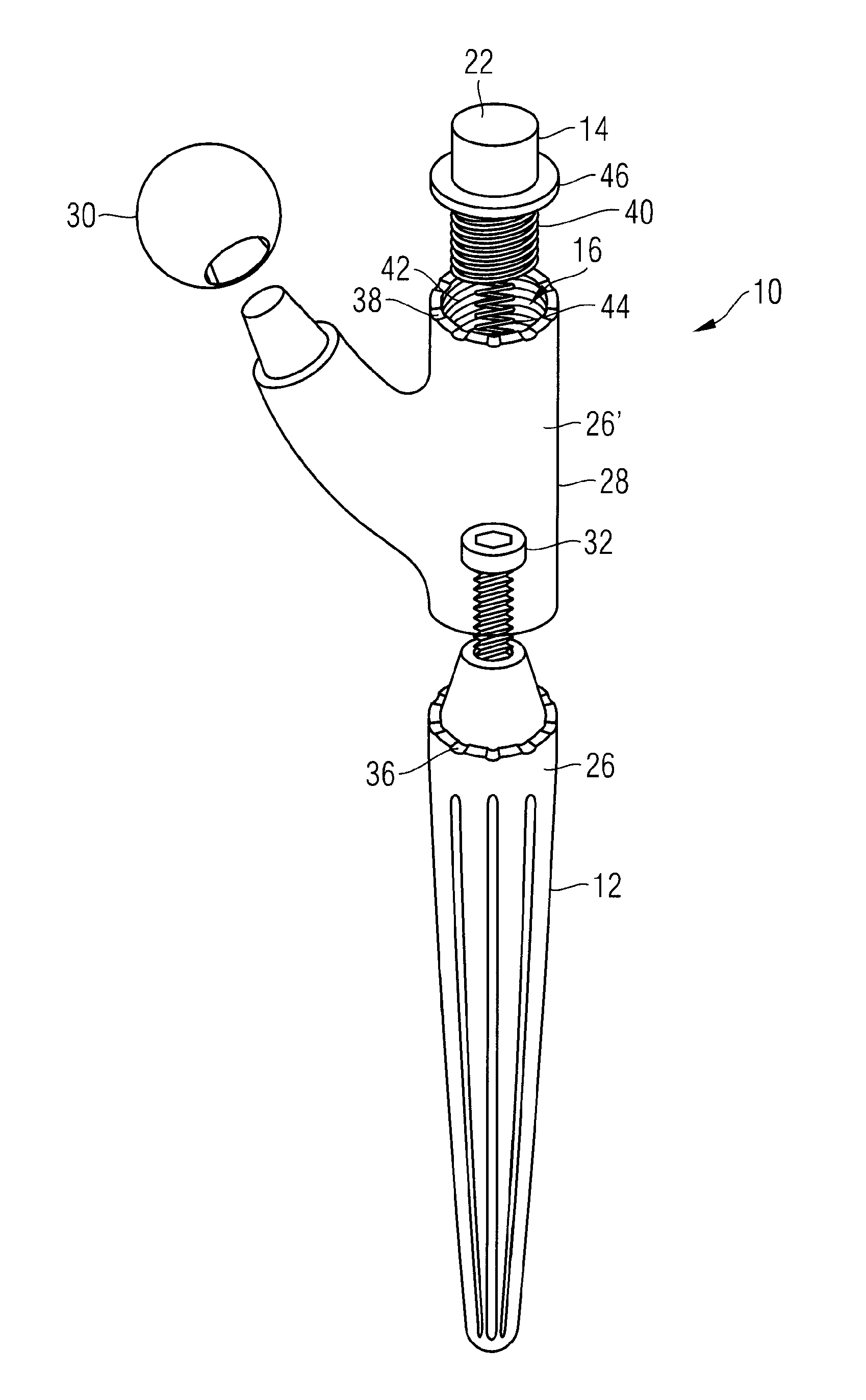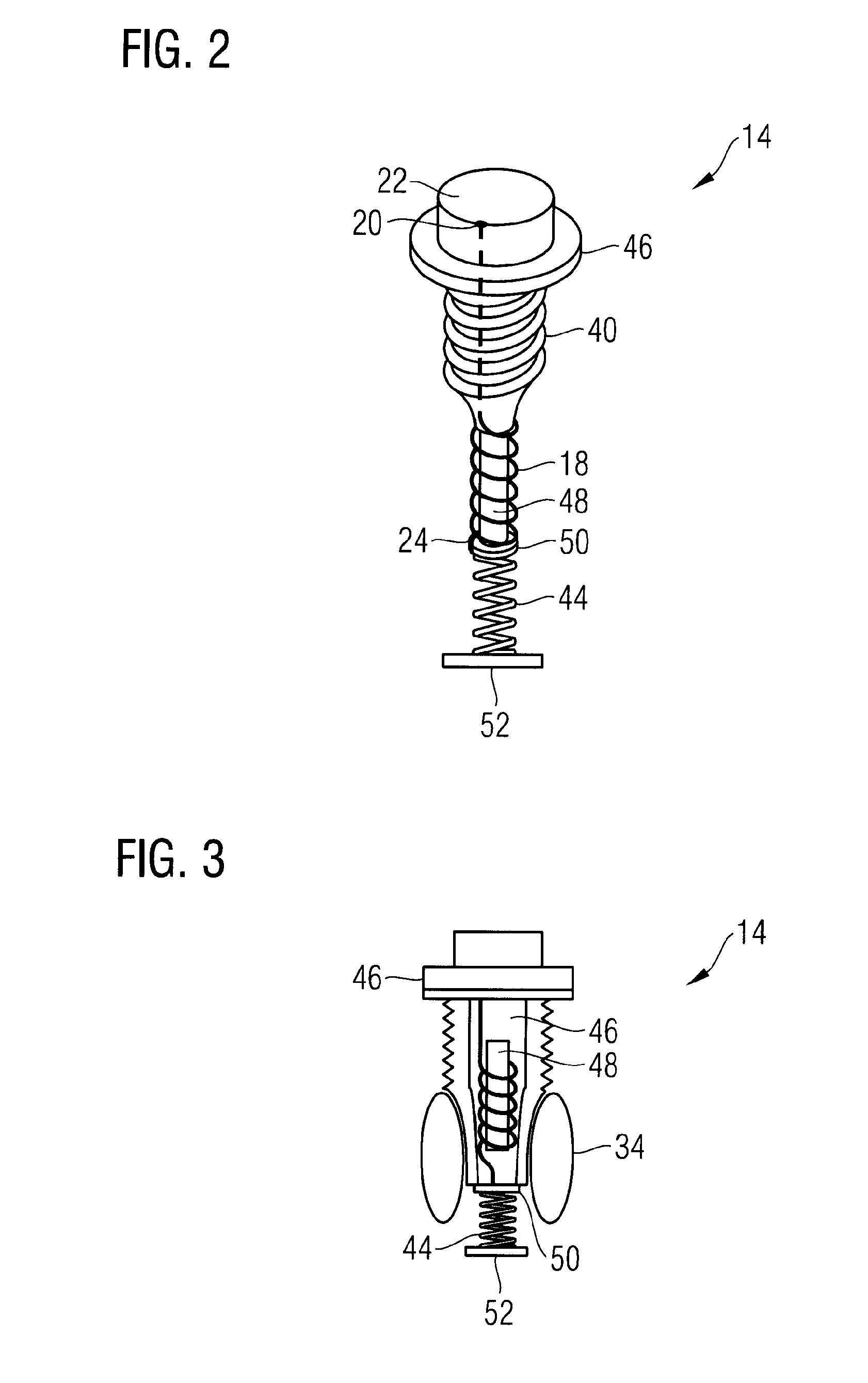Electric Hip Joint Prosthesis
- Summary
- Abstract
- Description
- Claims
- Application Information
AI Technical Summary
Benefits of technology
Problems solved by technology
Method used
Image
Examples
Example
DETAILED DESCRIPTION OF THE DRAWINGS
[0029]In the following description of the drawings the same numerals designate the same or comparable components.
[0030]FIG. 1 shows a perspective exploded view of a hip joint prosthesis 10 according to the invention. The hip joint prosthesis 10 comprises a shaft-like section 12, a neck section 28, a femoral head 30, and an end cap assembly 14. The neck section 28 is connectable to the shaft-like section 12 by means of a screw 32. The end cap assembly 14 comprises a male thread 40 which is screwable into a female thread 42 of the neck section 28. Inside the end cap assembly 14, electric components are arranged which will be described in more detail in connection with FIGS. 2 and 3. One pole of these electric components is electrically connected to a spring 44 carried by the end cap assembly 14. In the assembled state of the hip joint prosthesis 10, i.e., with the neck section 28 connected to the shaft-like section 12 by means of the screw 32 and th...
PUM
 Login to View More
Login to View More Abstract
Description
Claims
Application Information
 Login to View More
Login to View More - R&D
- Intellectual Property
- Life Sciences
- Materials
- Tech Scout
- Unparalleled Data Quality
- Higher Quality Content
- 60% Fewer Hallucinations
Browse by: Latest US Patents, China's latest patents, Technical Efficacy Thesaurus, Application Domain, Technology Topic, Popular Technical Reports.
© 2025 PatSnap. All rights reserved.Legal|Privacy policy|Modern Slavery Act Transparency Statement|Sitemap|About US| Contact US: help@patsnap.com



